- Home
- Michael Ondaatje
In the Skin of a Lion Page 2
In the Skin of a Lion Read online
Page 2
Before the spring breakup Hazen Lewis rode down to the Rathbun Timber Company headquarters. He demonstrated his talent, moving a log into precisely the location he said it would go, exploding a half-ton of shale, and was hired along with the river drivers. He had secured a role for himself in the industry that took place along the Depot Lakes and the Napanee River. When the company closed down some years later he moved over and worked as a dynamiter in the feldspar mine excavations around Verona and Godfrey, hired by the Richardson Mines. In all his life the longest speech was the one made to the Rathbun staff when he told them what he could do and that as far as he was concerned there were only two sensible jobs in logging – being a dynamiter and being a cook.
Along the chain of Depot Lakes – from First Depot to Fifth Depot – the loggers arrived in winter and disappeared into shanty camps, walking twenty miles into land they did not know. All February and March at the centre of the lakes the pyramids of logs grew, hauled there by sleds. Before daybreak the men were working – through the worst storms, in weather far below zero – and they finished at six. The double-handed crosscut saw brought down the pines. The pulp cutters, bent double, had to saw the stumps just above the ground. This was the worst job. Some used the swede saw. It cut spruce at twice the speed of the crosscut, and when they moved to the next camp they rolled up the narrow blade, making new handles in whatever forest they arrived at.
In April, with the melting of the lake ice, the river drives began. This was the easiest and most dangerous work. From Bellrock to Napanee men were stationed wherever the river narrowed. Bridges or split rocks had two or three men always there in case of a jam. If a jammed log did not get fished out in time the weight of others would pile up behind it and the whole length of the river would be padlocked. At this point the river drivers could do nothing and a dispatcher was sent on horseback for the dynamiter. A twenty-foot log suddenly leaping out of the water and side-swiping a man, breaking his chest.
Hazen Lewis and his son rode up to the split rock. The large man walked around the logjam. He drilled in a plug of dynamite and lit the fuse. He got the boy to shout the warning and the logs went up into the air, onto the bank, and the river was free.
In difficult cases Patrick would remove his clothes and grease himself down with oil from the crankcase of the steam donkey. He dove into the ribbed water and swam among the logs. Every half-minute wherever he was he had to raise his hand to assure his father. Eventually the boy located the log his father had pointed to. He caught the charge thrown out to him, crimped the blasting cap onto the fuse with his teeth, and lit the powder.
He re-emerged from the water, walked back to the horses, and dried himself with the towels from the packsack, like his father not even turning around to watch. A river exploded behind him, the crows leafing up.
The drives lasted a month and he watched the men float by, riding the sawlogs with their large poles towards Yarker down to Napanee where the corralled logs were towed to the mills. He was always beside his father. Patrick lazed in a patch of sun by the bridge and they waited.
At noon the cook walked up First Lake Road with two dairy pails. One pail carried tea, the other contained thick pork sandwiches. The sound of the crows above the food was a signal, and men emerged from various bends in the river. When the meal was over the cook picked up two empty pails and stepped onto a log on the water’s edge and floated back downstream to the camp. He stood up straight in mid-river, travelling at only the speed that the river wished. He would float under the bridge without altering his posture, though there was only an inch to spare, nodding to loggers on the bank, disheartened by the ever-present crows. He would step off at the camp at Goose Island with his shoes perfectly dry.
Hazen read his pamphlets. He dried the powdered cordite on a rock. He was sullen even in the company of his son. All his energy was with the fuse travelling at two minutes to the yard under floorboards, around the trunks of trees, and up into someone’s pocket. He kept receiving that image in his mind. Could he do it? The fuse stitched into the cloth of the trouser leg. The man sleeping perhaps by a campfire, the fuse smouldering horizontal into his shirt pocket, blowing out the heart. In his preoccupations the fuse always zigzagged like a hound’s nose along the ground, setting alight the ground cover till it was red lichen.
Hazen Lewis did not teach his son anything, no legend, no base of theory. The boy watched him prepare charges or pack equipment neatly back into his wooden case. His father wore no metal on him – not a watch or belt buckle. He was a man who with his few props had become self-sufficient, as invisible as possible. The explosions jostled logs out of the water unharmed. He left a track of half-inch holes in the granite all down the Depot Lakes system and along the Moira River system where he sometimes was hired. But these were as modest and minimal as they could be. A woodpecker’s work. He never wore a hat. He was a big man, six-foot-six, a heavy body. He was a bad rider of horses and later on a bad driver of trucks. He could assemble river dynamite with his eyes closed. He was meticulous in washing his clothes every evening in case there were remnants, little seeds of explosive on his apparel. Patrick scorned this obsession. His father took off his shirt one evening and threw it onto the campfire. The shirt fizzed and sprayed sparks over the knees of the loggers. There were abrupt lessons like this.
It was strange for Patrick to realize later that he had learned important things, the way children learn from watching how adults angle a hat or approach a strange dog. He knew how much a piece of dynamite the size of a bullfrog could destroy. But he absorbed everything from a distance. The only moments his father was verbal was when calling square dances in the Yarker and Tamworth Hotels during the log drives. He was always called on and he walked up to the stage as if it were a duty and broke into verses, swirling around the guitars and fiddles, dropping in a last phrase tight before he hit the wall of the rhyme. Taciturn about everything else, his father was taciturn in his square-dance calling. His words would slide non-commital over the dance floor, the boy watching at the edge and mouthing the phrases to himself. Not a muscle moved in the large body of his father as he stood there calling “Little red wagon the axle draggin.”
The unemotional tongue. Patrick could see himself on stage striding up and down, his arms bent and cocky. “Birdie fly out and the crow fly in – crow fly out and give birdie a spin,” he would mutter to himself, later, in the daylight.
One winter night when he was eleven years old, Patrick walked out from the long kitchen. A blue moth had pulsed on the screen, bathed briefly in light, and then disappeared into darkness. He did not think it would go far. He picked up the kerosene lamp and went out. A rare winter moth. It was scuffing along the snow as if injured and he could follow it easily. In the back garden he lost it, the turquoise moth arcing up into the sky beyond the radius of the kerosene light. What was a moth doing at this time of year? He hadn’t seen any for months. It may have been bred in the chicken coop. He put the hurricane lamp onto a rock and looked over the fields. Among the trees in the distance he saw what looked like more bugs. Lightning bugs within the trees by the river. But this was winter! He moved forward with the lamp.
The distance was further than he thought. Snow above the ankles of his untied boots. One hand in a pocket, the other holding a lamp. And a moon lost in the thickness of clouds so it did not shine a path for him towards the trees. All that gave direction was a blink of amber. Already he knew it could not be lightning bugs. The last of the summer’s fireflies had died somewhere in the folds of one of his handkerchiefs. (Years later, Clara making love to him in a car, catching his semen in a handkerchief and flinging it out onto bushes on the side of the road. Hey, lightning bug! he had said, laughing, offering no explanation.)
He waded through the snow, past outcrops of granite, and into the trees where the snow was not as deep. The lights still blinked in front of him. There was laughter. Now he knew what it was. He crept on into the familiar woods as if walking into, testing the rooms of
a haunted house. He knew who it was but he did not know what he would see. Then he was at the river. He put the lamp down beside the oak and walked in darkness towards the bank.
The ice shone with light. It seemed for a moment that he had stumbled on a coven, or one of those strange druidic rituals – illustrations of which he had pored over in his favourite history book. But even to the boy of eleven, deep in the woods after midnight, this was obviously benign. Something joyous. A gift. There were about ten men skating, part of a game. One chased the others and as soon as someone was touched he became the chaser. Each man held in one hand a sheaf of cattails and the tops of these were on fire. This is what lit the ice and had blinked through the trees.
They raced, swerved, fell and rolled on the ice to avoid each other but never let go of the rushes. When they collided sparks fell onto the ice and onto their dark clothes. This is what caused the howls of laughter – one of them stationary, struggling to shake off a fragment that had fallen inside his sleeve, yelling out for the others to stop.
Patrick was transfixed. Skating the river at night, each of them moving like a wedge into the blackness magically revealing the grey bushes of the shore, his shore, his river. A tree branch reached out, its hand frozen in the ice, and one of them skated under it, crouching – cattails held behind him like a flaming rooster tail.
The boy knew they were the loggers from the camp. He longed to hold their hands and skate the length of the creek slowing down through cut rock and under bridges and into town with these men, knowing they would have to return to those dark cabins by the mill.
It was not just the pleasure of skating. They could have done that during the day. This was against the night. The hard ice was so certain, they could leap into the air and crash down and it would hold them. Their lanterns replaced with new rushes which let them go further past boundaries, speed! romance! one man waltzing with his fire.…
To the boy growing into his twelfth year, having lived all his life on that farm where day was work and night was rest, nothing would be the same. But on this night he did not trust either himself or these strangers of another language enough to be able to step forward and join them. He turned back through the trees and fields carrying his own lamp. Breaking the crust with each step seemed graceless and slow.
So at this stage in his life his mind raced ahead of his body.
THE BRIDGE
A TRUCK CARRIES fire at five A.M. through central Toronto, along Dundas Street and up Parliament Street, moving north. Aboard the flatbed three men stare into passing darkness – their muscles relaxed in this last half-hour before work – as if they don’t own the legs or the arms jostling against their bodies and the backboard of the Ford.
Written in yellow over the green door is DOMINION BRIDGE COMPANY. But for now all that is visible is the fire on the flatbed burning over the three-foot by three-foot metal dish, cooking the tar in a cauldron, leaving this odour on the streets for anyone who would step out into the early morning and swallow the air.
The truck rolls burly under the arching trees, pauses at certain intersections where more workers jump onto the flatbed, and soon there are eight men, the fire crackling, hot tar now and then spitting onto the back of a neck or an ear. Soon there are twenty, crowded and silent.
The light begins to come out of the earth. They see their hands, the textures on a coat, the trees they had known were there. At the top of Parliament Street the truck turns east, passes the Rosedale fill, and moves towards the half-built viaduct.
The men jump off. The unfinished road is full of ruts and the fire and the lights of the truck bounce, the suspension wheezing. The truck travels so slowly the men are walking faster, in the cold dawn air, even though it is summer.
Later they will remove coats and sweaters, then by eleven their shirts, bending over the black rivers of tar in just their trousers, boots, and caps. But now the thin layer of frost is everywhere, coating the machines and cables, brittle on the rain puddles they step through. The fast evaporation of darkness. As light emerges they see their breath, the clarity of the air being breathed out of them. The truck finally stops at the edge of the viaduct, and its lights are turned off.
The bridge goes up in a dream. It will link the east end with the centre of the city. It will carry traffic, water, and electricity across the Don Valley. It will carry trains that have not even been invented yet.
Night and day. Fall light. Snow light. They are always working – horses and wagons and men arriving for work on the Danforth side at the far end of the valley.
There are over 4,000 photographs from various angles of the bridge in its time-lapse evolution. The piers sink into bedrock fifty feet below the surface through clay and shale and quicksand – 45,000 cubic yards of earth are excavated. The network of scaffolding stretches up.
Men in a maze of wooden planks climb deep into the shattered light of blond wood. A man is an extension of hammer, drill, flame. Drill smoke in his hair. A cap falls into the valley, gloves are buried in stone dust.
Then the new men arrive, the “electricals,” laying grids of wire across the five arches, carrying the exotic three-bowl lights, and on October 18, 1918 it is completed. Lounging in mid-air.
The bridge. The bridge. Christened “Prince Edward.” The Bloor Street Viaduct.
During the political ceremonies a figure escaped by bicycle through the police barriers. The first member of the public. Not the expected show car containing officials, but this one anonymous and cycling like hell to the east end of the city. In the photographs he is a blur of intent. He wants the virginity of it, the luxury of such space. He circles twice, the string of onions that he carries on his shoulder splaying out, and continues.
But he was not the first. The previous midnight the workers had arrived and brushed away officials who guarded the bridge in preparation for the ceremonies the next day, moved with their own flickering lights – their candles for the bridge dead – like a wave of civilization, a net of summer insects over the valley.
And the cyclist too on his flight claimed the bridge in that blurred movement, alone and illegal. Thunderous applause greeted him at the far end.
On the west side of the bridge is Bloor Street, on the east side is Danforth Avenue. Originally cart roads, mud roads, planked in 1910, they are now being tarred. Bricks are banged into the earth and narrow creeks of sand are poured in between them. The tar is spread. Bitumiers, bitumatori, tarrers, get onto their knees and lean their weight over the wooden block irons, which arc and sweep. The smell of tar seeps through the porous body of their clothes. The black of it is permanent under the nails. They can feel the bricks under their kneecaps as they crawl backwards towards the bridge, their bodies almost horizontal over the viscous black river, their heads drunk within the fumes.
Hey, Caravaggio!
The young man gets up off his knees and looks back into the sun. He walks to the foreman, lets go of the two wooden blocks he is holding so they hang by the leather thongs from his belt, bouncing against his knees as he walks. Each man carries the necessities of his trade with him. When Caravaggio quits a year later he will cut the thongs with a fish knife and fling the blocks into the half-dry tar. Now he walks back in a temper and gets down on his knees again. Another fight with the foreman.
All day they lean over tar, over the twenty yards of black river that has been spread since morning. It glistens and eases in sunlight. Schoolkids grab bits of tar and chew them, first cooling the pieces in their hands then popping them into their mouths. It concentrates the saliva for spitting contests. The men plunk cans of beans into the blackness to heat them up for their lunch.
In winter, snow removes the scent of tar, the scent of pitched cut wood. The Don River floods below the unfinished bridge, ice banging at the feet of the recently built piers. On winter mornings men fan out nervous over the whiteness. Where does the earth end? There are flares along the edge of the bridge on winter nights – worst shift of all – where they hammer the nai
ls in through snow. The bridge builders balance on a strut, the flares wavering behind them, aiming their hammers towards the noise of a nail they cannot see.
The last thing Rowland Harris, Commissioner of Public Works, would do in the evenings during its construction was have himself driven to the edge of the viaduct, to sit for a while. At midnight the half-built bridge over the valley seemed deserted – just lanterns tracing its outlines. But there was always a night shift of thirty or forty men. After a while Harris removed himself from the car, lit a cigar, and walked onto the bridge. He loved this viaduct. It was his first child as head of Public Works, much of it planned before he took over but he had bullied it through. It was Harris who envisioned that it could carry not just cars but trains on a lower trestle. It could also transport water from the east-end plants to the centre of the city. Water was Harris’ great passion. He wanted giant water mains travelling across the valley as part of the viaduct.
He slipped past the barrier and walked towards the working men. Few of them spoke English but they knew who he was. Sometimes he was accompanied by Pomphrey, an architect, the strange one from England who was later to design for Commissioner Harris one of the city’s grandest buildings – the water filtration plant in the east end.

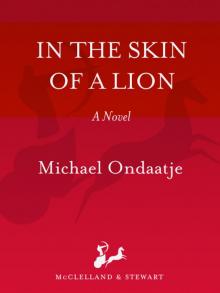 In the Skin of a Lion
In the Skin of a Lion The Cinnamon Peeler
The Cinnamon Peeler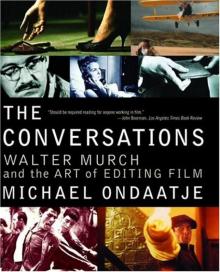 The Conversations: Walter Murch and the Art of Editing Film
The Conversations: Walter Murch and the Art of Editing Film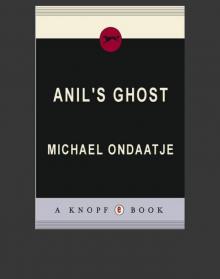 Anil's Ghost
Anil's Ghost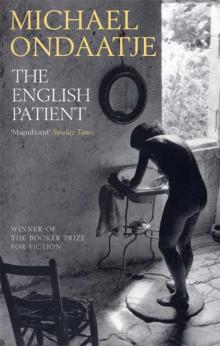 The English Patient
The English Patient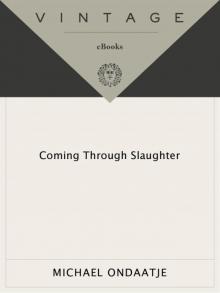 Coming Through Slaughter
Coming Through Slaughter Handwriting
Handwriting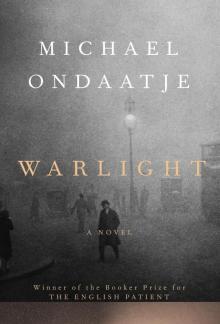 Warlight
Warlight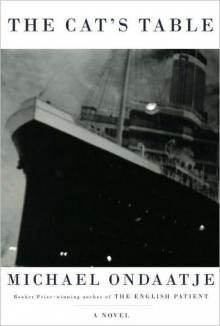 The Cat's Table
The Cat's Table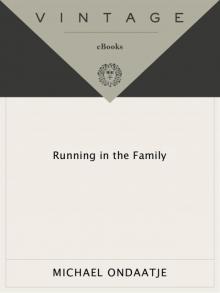 Running in the Family
Running in the Family The Collected Works of Billy the Kid
The Collected Works of Billy the Kid Divisadero
Divisadero